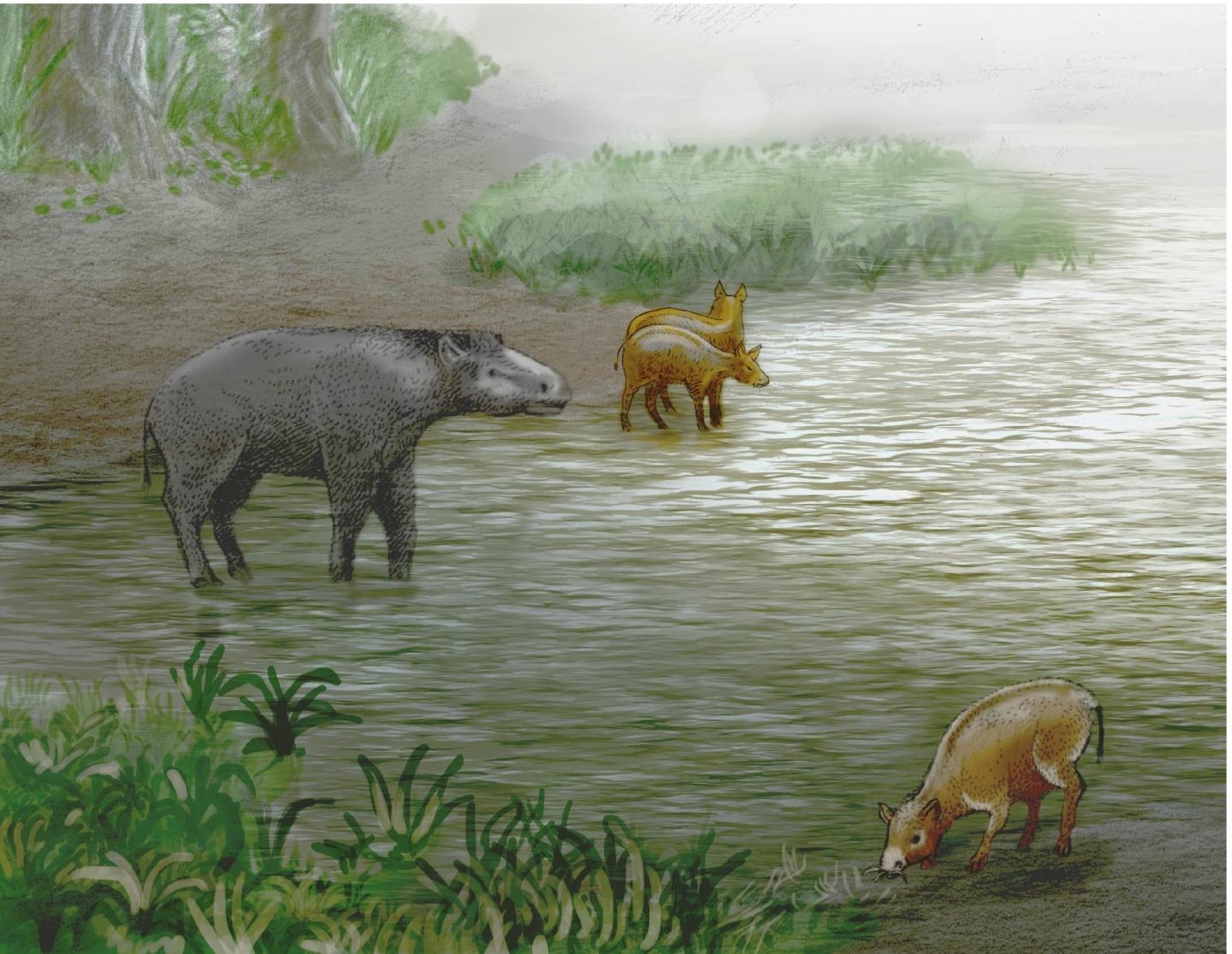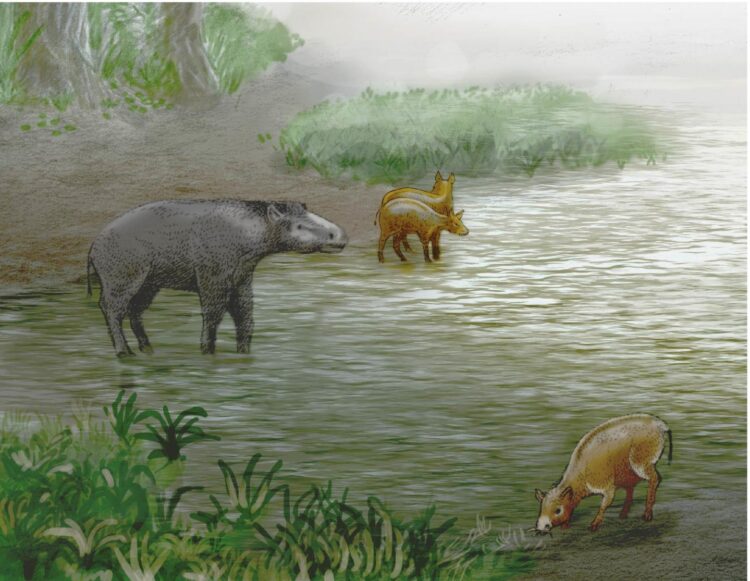Researchers at the UPV/EHU-University of the Basque Country describe two palaeotheriidae mammals that lived in the subtropical landscape of Alava

Credit: Paleoillustration: Ulises Martínez Cabrera.
Although hypomorph mammals (or equids) are currently represented by only one genus (‘Equus’) and just a handful of species of horses, donkeys and zebras, they were more diverse during the Eocene epoch (between 56 and 33.9 million years ago). One of the most widespread groups in Europe, which was an archipelago at that time, were the palaeotheriidae, named after the genus ‘Palaeotherium’, described in 1804 from fossils originating in the quarries of Montmartre (Paris) by the famous French naturalist George Cuvier.
The international Journal of Vertebrate Paleontology has recently published a paper on a study led by Leire Perales-Gogenola describing two new species of palaeotheriidae mammals that inhabited the subtropical landscape of Zambrana (Álava) 37 million years ago. Together with their collaborators from the UPV/EHU’s Vertebrate Palaeontology research group, they described the new species ‘Leptolophus cuestai’ and ‘Leptolophus franzeni’, naming them in memory of the palaeontologists Miguel Ángel Cuesta from Palencia, and Jens Lorenz Franzen from Bremen, specialists in mammal fauna of the Eocene epoch in Europe.
Palaeotheriidae (or pseudo-horses) were represented across the European archipelago by more than half a dozen genera, more than half of which were endemic to the Iberian island, and became extinct during the climatic-biological crisis of the Eocene-Oligocene transition, also known as Stehlin’s ‘Grande Coupure’. Palaeotheriidae were mammals similar in terms of body shape to today’s horses, but smaller in size. “Can one imagine animals similar to horses with three toes, the size of a fox terrier, a Great Dane and a donkey living in a subtropical landscape in Alava? Many of these pseudo-horses have been described at the Zambrana site,” said one of the team members Dr Ainara Badiola. “Examples of them are the ‘Pachynolophus zambranensis’ and ‘Iberolophus arabensis’ species, which were first specified in this palaeontological enclave”.
The two new species not only expand the fossil record and the biodiversity of palaeotheriidae fauna, but also display dental features atypical for equids of the Eocene. “Their molars have a very high crown and are covered with a thick layer of cementum. This type of dentition, also present in other endemic Iberian palaeotheriidae, could be indicative of a difference in environmental conditions between the Iberian and Central European areas, with more arid conditions or less dense or closed forests and the presence of more open areas in Iberia,” explained Perales-Gogenola.
At the end of the Eocene in Europe, forests of an intertropical type gradually disappeared, giving way to plant communities of a more temperate type with more open areas. Modern horses or equids appeared in Europe later on during the Miocene (23-5.3 Ma). Their dentition, with very high crowns, is adapted for eating vegetation with a high grit content (grasses). The new species ‘Leptolophus cuestai’ from the Upper Eocene site at Zambrana (Álava) also displays molars with atypically high crowns, similar to those of some of the earliest equids in Europe.
In addition to its palaeobiological interest, the diverse fossil association of mammals from Zambrana, which comprises primates, rodents, marsupials, carnivores, artiodactyla and perissodactyla, provides new information on the climatic and environmental changes that occurred in Europe and in our environment over geological time.
The UPV/EHU’s Vertebrate Palaeontology group is currently immersed in the description of more palaeotheriidae material, which could facilitate the description of new genera and species with unusual dental features among the equoid perissodactyla.
###
Media Contact
Matxalen Sotillo
[email protected]
Original Source
https:/
Related Journal Article
http://dx.





